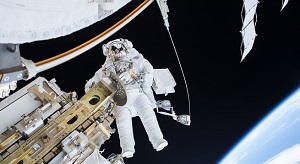
Maybe you’re having a busy week at work, and you get a call from home: “You know that fault on the sequential shunt unit? Looks like this Friday would be a good time to get it sorted. It’ll be easy to fix – just one bolt needs to be undone.”
If you are handy about the house, undoing a bolt to change a bit of kit is easy and may just take five minutes. Unless the bolt is buried deep within the car engine, or is underneath on the chassis. Then you’ll have to go outside. It’s winter, it’s cold, you put on an old coat, maybe a woolly hat, and prepare to meet the DIY challenge. An hour later, back indoors, nice cup of tea, job done.
These scenarios assume you have the right-sized spanners, the nut hasn’t seized, you can reach the bolt and its thread isn’t stripped – then the DIY challenge might take a bit longer. They also assume that the light level (whether inside or out) is going to remain relatively constant.
But imagine you have to spend a couple of hours doing breathing exercises to prevent decompression sickness before getting dressed up to do the work, and having to manipulate those spanners wearing the equivalent of stiff gauntlets. You know the job is going to take several hours, and you can’t just nip back inside for that cup of tea. Not only that – your tools are attached to you, and you are tethered – and when you look up (or is it down?), there is a rather disconcerting view of a planet passing below you. And every 45 minutes you are plunged into darkness, followed 45 minutes later by bright daylight.
This is what Tim Peake and Tim Kopra, two of the astronauts currently serving time on the International Space Station (ISS), will experience on January 15, when they leave the ISS to fix part of the Sequential Shunt Unit (SSU) and lay some cables.
The SSU is the relay system that controls power from the solar panels, and one of its eight sub-units (number 1B) has failed and is to be replaced. One bolt has to be undone, the faulty unit removed, new one installed, and the single bolt re-tightened. It will take about three hours to complete the task, something that would take maybe half an hour back home. Kopra, a NASA astronaut, has already completed one Extra-Vehicular Activity (EVA, aka spacewalk) since arriving at the ISS a month ago, but this will be the first for ESA astronaut Tim Peake – and the first ever by an astronaut with a British flag on his spacesuit.
 In a week where the world has been remembering David Bowie and Major Tom (who sang “Here am I, sitting in a tin can, far above the world”) we will watch with fascination as first Colonel Tim and then Major Tim float out of the ISS airlock to complete their scheduled tasks. It sounds glamorous to be an astronaut – but is it? After mending the SSU together, the two astronauts will go to different parts of the ISS, one to fix a valve and change a light bulb, the other to lay some cable.
In a week where the world has been remembering David Bowie and Major Tom (who sang “Here am I, sitting in a tin can, far above the world”) we will watch with fascination as first Colonel Tim and then Major Tim float out of the ISS airlock to complete their scheduled tasks. It sounds glamorous to be an astronaut – but is it? After mending the SSU together, the two astronauts will go to different parts of the ISS, one to fix a valve and change a light bulb, the other to lay some cable.
Being an astronaut seems to be a combination of electrician and plumber, having to go to work dressed in a suit that a scuba diver might need, wearing gloves that could double as gear for someone handling birds of prey, and having to reach your workplace following the protocol that someone scaling an ice-cliff would use. You get no food for hours at a time, just a few sips of water – and you can’t go to the loo.
But, on the plus side, the views are tremendous. And you can be sure that the spanners will be the correct size.
![]() Monica Grady, Professor of Planetary and Space Sciences, The Open University.
Monica Grady, Professor of Planetary and Space Sciences, The Open University.
This article was originally published on The Conversation. Read the original article.
Rate and Review
Rate this article
Review this article
Log into OpenLearn to leave reviews and join in the conversation.
Article reviews